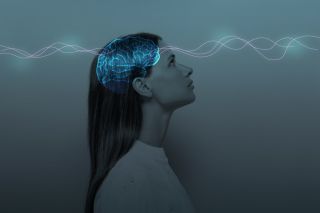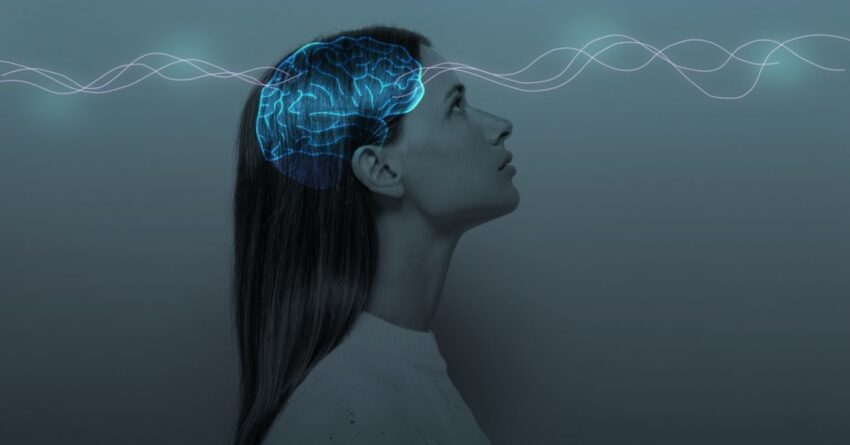By Mac E. Lancaster, BS, Aneesh Nudurupati, and Ran D. Anbar, MD
Although some people may shroud their understanding of hypnosis in mysticism, the science behind the practice is profound. Hypnosis can be used as a tool to deliver therapy that allows a person to relax, detach from feelings of self-consciousness, and take on a mindset of suspended judgment (Jiang et al., 2017). Thus, they can better direct their attention internally, and become more apt to accept suggestions from the self or a practitioner (Williamson, 2019).

Source: Pavlova Yuliia/Shutterstock
In this reflective state, people can use their imagination to their advantage. For instance, you can picture a pleasant environment to remain calm that can allow for better physical and emotional control.
The majority of people can receive and benefit from suggestions (Elkins, 2021). Reliable tests such as the Stanford Hypnotic Susceptibility Scales are the gold standard for measuring “hypnotizability” (Vanhaudenhuyse et al., 2019)
Research has shown the efficacy of hypnosis in treating conditions such as pain, anxiety, depression, headaches, and irritable bowel syndrome (Jensen et al., 2015a). There are also many case reports showing its efficacy for treating eating disorders (Walsh, 2008), OCD (Proescher, 2010), phobias (Anbar et al., 2023), shortness of breath (Anbar, 2001), and substance use disorder (Orman, 1991), though research is necessary to validate whether observations made with individual people can be reliably generalized.
This blog will dive into the neurology behind hypnosis and the intricate relationship between the human mind and body that facilitates therapeutic interaction.
You Become What You Think
Sensory hypnotic experiences involving sight, sound, and touch activate the same regions of the brain specific to those senses (Williamson, 2019). When you visualize a calming environment and mentally engage your senses, your brain is stimulated as if you were there. Even hypnotically induced pain activates the same large network of brain regions normally triggered by something physical, leading to perceived pain (Derbyshire et al., 2004).
Just as easily as the imagination can make mentally experienced sensations feel real, it also has the potential to increase feelings of anxiety. Some people with anxiety unintentionally use their imagination to picture anxiety-provoking situations, leading to even more anxiety.
This means that certain chemicals associated with feeling stress, like epinephrine, may be produced and enter the bloodstream, based on an imagined threat even if the person is not in a real-life fight-or-flight situation (Williamson, 2019).
Significant changes in muscle strength can also result from mental training without physical exertion (Slimani et al., 2016). Physiological responses of increased heart rate, blood pressure, and respiration have been recorded as a result of imagining exercising (Slimani et al., 2016).
In one study, after 12 weeks of performing mental muscle contractions, two experimental groups showed significant changes in either elbow or finger strength, respectively, compared to the control group (Ranganathan et al., 2004). By repeatedly attempting to mentally activate certain muscle groups, communication is thought to be strengthened between the central nervous system and muscle regions (Ranganathan et al., 2004). The process by which this connection is strengthened remains to be elucidated (Slimani et al., 2016).
Parasympathetic Excitation
Why does hypnosis have such an influence on the body and mind? The answer lies in understanding the autonomic nervous system, which helps you stay alive by regulating involuntary bodily activities like heart rate, and organ functioning (Waxenbaum et al., 2023).
The part of the autonomic nervous system responsible for relaxation is the parasympathetic nervous system (PNS), commonly referred to as the body’s “rest and digest” system (LeBouef et al., 2023). Hypnosis increases PNS activity both during and directly after the experience, leading to relaxation of the body, decreased anxiety, and reduced pain perception (VandeVusse et al., 2010).
One study examined the effects of hypnosis on PNS in people undergoing surgery (Boselli et al., 2018). Researchers analyzed the analgesia/nociception index (ANI), which measures PNS activity while someone is under anesthesia, and subjective comfort ratings (0-10) post-surgery (Boselli et al. 2018). They found a significant increase in PNS activity when people entered a state of hypnosis before they were given anesthesia (Boselli et al., 2018), which was associated with increased subjective comfort levels after surgery.

Five types of brainwaves.
Source: Mac E. Lancaster
Brain Wave Changes
Brain activity involves chemicals, as in the epinephrine example above, but it also requires electricity to respond to or generate information. Rhythmic patterns of this electrical neural activity are characterized as oscillations or brainwaves. Different kinds of brainwaves can be documented with an encephalogram (EEG), and are more associated with certain brain states (Başar, 2013).
For example, alpha waves are always occurring, but are increased during a waking state, while delta waves are increased during sleep.
Hypnosis, on the other hand, is associated with increased theta waves and thus may be a state different from awake and sleep states (Jensen et al., 2015b). Theta waves are a slower set of waves, with a high amplitude associated with many areas of cognition including attention, decision-making, drowsiness, emotional arousal, and storage and retrieval of memories (Jensen et al., 2015b).
One study found theta wave activity to be positively associated with hypnosis, higher levels of hypnotizability, and decreased response to pain during hypnosis (Wolf et al., 2022). Furthermore, highly hypnotizable people show higher theta wave activity during both hypnosis and regular baseline conditions (Wolf et al., 2022). The association of theta waves may underlie emotional changes during a hypnotic state.
Brain Region Associations
Multiple brain regions can be impacted by induction into hypnosis. While we don’t fully understand all the brain regions involved in hypnosis, the dorsal anterior cingulate cortex (dACC), insula, and dorsolateral prefrontal cortex (DLPFC) appear to be crucial contributors to the experience (Jiang et al., 2017).
The dACC is implicated in myriad areas of cognition but can be simplified as having three major functions (Heilbronner & Hayden, 2016):
- Monitoring our environment for errors, conflicts, anxiety, and rewards.
- Controlling our behavior, changing it to fit within the monitored context.
- Motivating us toward achieving a certain outcome—generally the current task at hand.
The insula is involved with internal bodily function and self-monitoring, and the DLPFC is involved in working memory, task engagement, and attention (Jiang et al., 2017).
Using functional magnetic resonance imaging, we can see that during hypnosis, activity within the dACC is reduced, decreasing external attention (Jiang et al., 2017). This takes place simultaneously while the connection between the insula and the DLPFC is strengthened, increasing internal bodily awareness (Jiang et al., 2017).
Takeaway
While the neural mechanisms underlying hypnosis have yet to be entirely understood, implementing hypnosis can profoundly affect our brains and bodies. We can choose to practice hypnosis in our lives, thus reaping cognitive and behavioral benefits.
Mac Lancaster obtained his undergraduate degree in Cognitive and Behavioral Neuroscience at UC San Diego. Aneesh Nudurupati is a high school student who helped extensively with the literature search for this blog.
